Richard Buckminster Fuller, also known as Buckminster Fuller, was an American futurist, author, designer, architect, systems theorist, and inventor. He was born on July 12, 1895, and passed away on July 1, 1983. Fuller was renowned for his creative ideas and designs, as well as his broad viewpoint on the issues facing the globe. Fuller popularized the phrase “Spaceship Earth” to refer to the globe and promoted an international viewpoint when tackling humanity’s problems. He wrote a great deal about his views and theories, and his contributions to the domains of sustainability, design, and architecture were profound.
Richard Buckminster Fuller
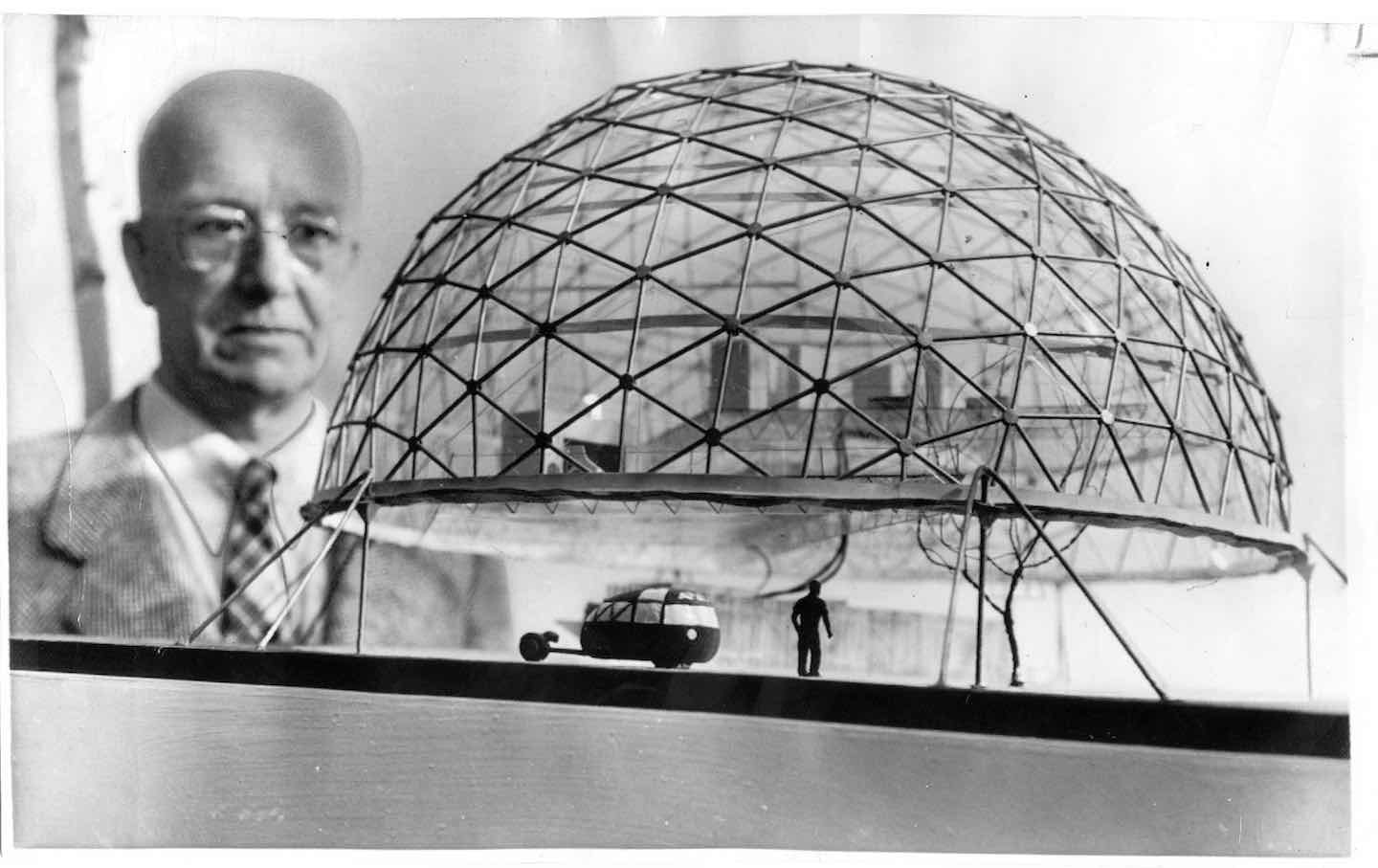
During the 1960s, Buckminster Fuller introduced the concept of a “great logistics game” and a “world peace game,” eventually simplified to the “World Game.” This initiative aimed to serve as a tool facilitating a holistic, forward-thinking, design science approach to global issues. The World Game that Fuller envisioned was to be a place where individuals or teams of people came and competed, or cooperated, to: “Make the world work, for 100% of humanity, in the shortest possible time, through spontaneous cooperation, without ecological offense or the disadvantage of anyone.”
Buckminster Fuller’s most well-known development is the “geodesic dome.” The geodesic dome stands out as the sole large dome structure capable of being placed directly on the ground as a unified whole. It also represents the only feasible type of building without restrictive dimensions. The US pavilion at Expo 67 in Montreal is one of the most notable geodesic domes. Among various projects such as Montreal Biosphère, Dymaxion House, and Dymaxion Car, this article aims to cover the most known realized and unrealized projects of Buckminster Fuller.
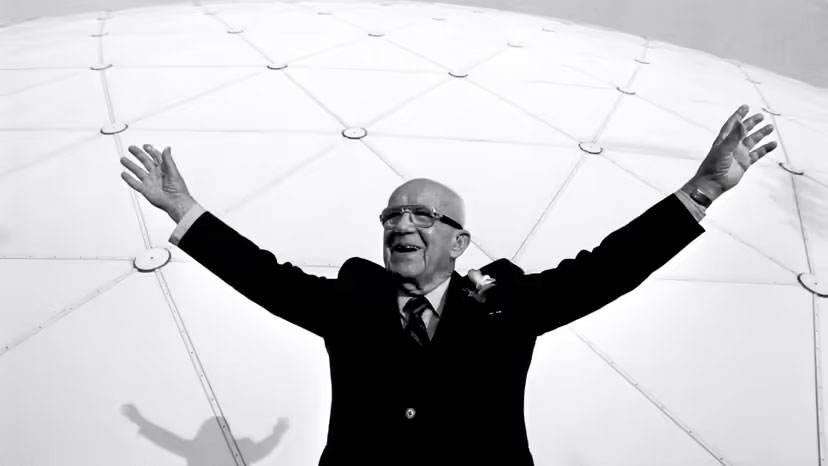
“Let architects dream of glass boxes with steam
Buckminster Fuller sings “Rome Home to a Dome”
And rich clients in hordes at their knees
Just give me a home in a great circle dome
Where the birds and bees are at ease.”
Geodesic Structures
Buckminster Fuller illustrated the contrasting strength of a rectangle and a triangle by applying pressure to both structures. While the rectangle tended to fold and become unstable, the triangle demonstrated remarkable rigidity, being twice as strong under pressure. This principle guided Fuller’s exploration into a novel architectural design, the geodesic dome, aligned with his philosophy of “doing more with less.” His discovery revealed that constructing a spherical structure using triangles resulted in unparalleled strength.
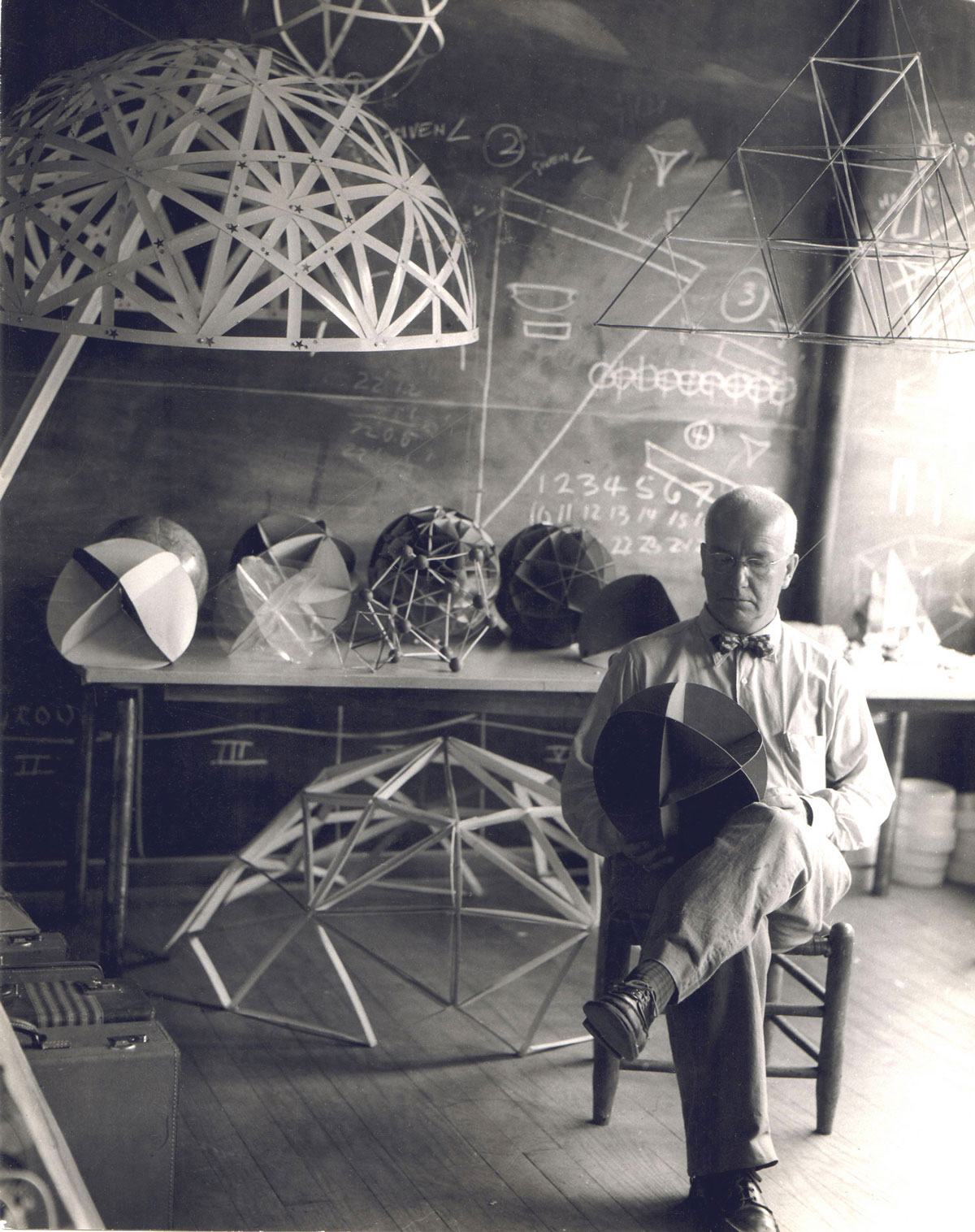
A geodesic dome is a spherical or hemispherical structure composed of a network of interconnected triangles or other polygonal shapes. The dome’s framework is usually composed of sturdy, lightweight materials, and its design facilitates an effective distribution of weight and stress throughout the structure. Geodesic domes are renowned for their effectiveness in enclosing space with the least amount of materials. The term “geodesic” refers to the shortest distance between two points on a curved surface. Geodesic domes are known for their resilience, energy efficiency, and versatility.
The sphere is an example of “doing more with less” because it saves material and money by covering the most interior space with the least amount of surface area. Fuller reintroduced the idea that the sphere’s volume increases eight times when its diameter doubles, quadrupling its square footage. The dome is more beneficial ecologically because of various reasons. The decreased surface area needs fewer materials, the concave interior space allows natural airflow, and preventing radiant heat loss by functioning akin to a massive down-pointing headlight reflector and reflecting heat from within can be counted as some beneficial reasons.
Montreal Biosphere

Year: 1967
Location: Quebec, Canada
The Biosphere, also known as the Montreal Biosphere, is a museum located in Montreal, Quebec, Canada. The structure was originally built as the United States pavilion at Expo 67. The geodesic dome exterior was designed by Buckminster Fuller with Shoji Sadao and Geometrics Inc. The interior structure and exhibits were designed by Cambridge Seven Associates. The construction began in 1965 and opened with The Expo in 1967.
In 1976, a great fire severely damaged the Biosphere. The fire started during the structural renovations and burned away the building’s acrylic bubble, however, the steel truss remained. Following the fire, the city was committed to preserving the Biosphere and repurposing it as an open-air structure, potentially incorporating suspended gardens or serving as a concert venue.
Although various ideas and steps were taken to save the building, the structure remained closed until 1990. In August 1990, Environment Canada committed to the project to turn the Biosphere into an interactive museum. Although the themes of the museum have changed over time according to current situations, the building still continues to serve as one of the frequently visited museums with both its architecture and exhibitions.
Dymaxion House
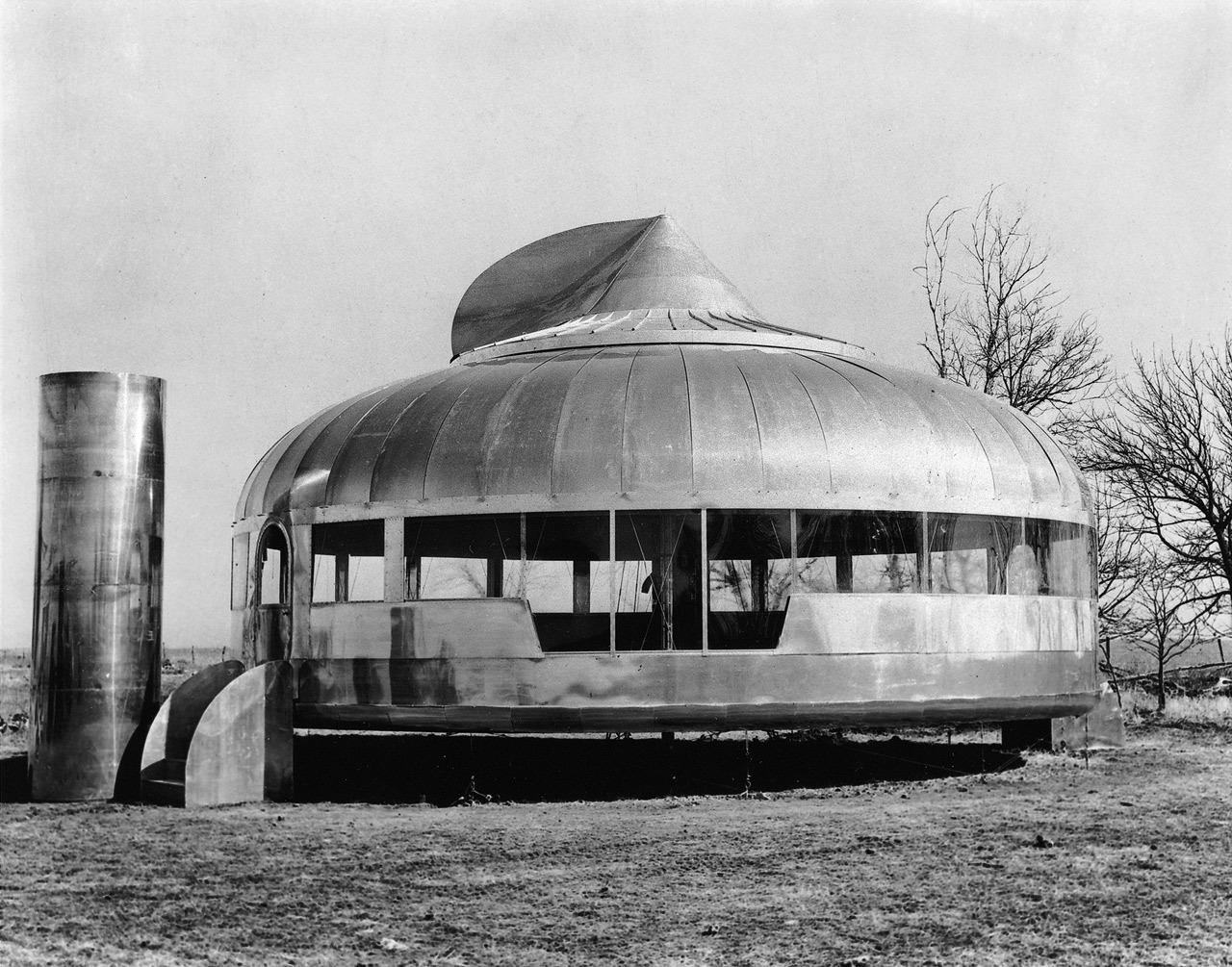
Year: 1927
Location: Henry Ford Museum
The Dymaxion House represented Fuller’s answer to the demand for a mass-produced, affordable, easily transportable, and environmentally efficient dwelling. The project was designed in the late 1920s but not constructed until 1946. The term “Dymaxion” was coined by combining elements of three of Fuller’s preferred words: DY (dynamic), MAX (maximum), and ION (tension). Toward the end of WWII, Fuller attempted to create a new industry for mass-producing Dymaxion Houses.
Dymaxion house is designed as a home that is heated and cooled naturally, produces its own power, is earthquake- and storm-proof, and is made of permanent materials that do not require periodic painting, retrofitting, or other maintenance. Dymaxion House offers unusual benefits with innovative solutions, such as the reduction of the need to vacuum and dust due to the downdraft ventilation that draws dust to the baseboards through filters. Or O-Volving Shelves and rotating closets that bring clothes to the users.

Fuller set aside the Dymaxion project until 1944 when the housing shortage after World War II prompted him to reconsider the concept of mass-producing residential units. To bring the house to fruition, Fuller entered into a two-year research contract with Beech Aircraft Industries, which possessed ample aluminum resources in the post-war period. In 1946, Fuller completed two prototypes, the Barwise prototype, and the Danbury prototype, although neither was assembled or mass-produced. In 1948, William Graham, a previous investor, acquired and merged both prototypes to establish the “Wichita House.”
This version embodied a refined interpretation of the original Dymaxion design: the hexagon shape was altered into a seamless circle. Except for the patented Dymaxion bathroom, none of the original housing elements were incorporated into the Wichita House.
R. Buckminster Fuller and Anne Hewlett Dome Home
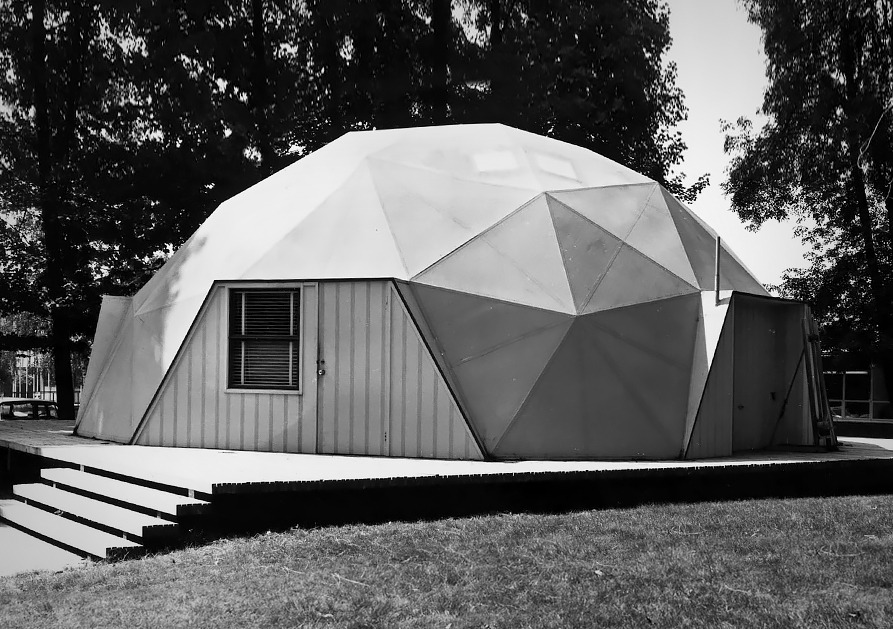
Year: 1960
Location: California, USA
Located in Carbondale, Illinois, the R. Buckminster Fuller and Anne Hewlett Dome Home is a geodesic dome residence that served as Buckminster Fuller’s home from 1960 to 1971. This unique dwelling, which Fuller occupied during his time at Southern Illinois University, stands out as the only geodesic dome he resided in and the singular property he ever owned.
The residence became the backdrop for significant achievements during Fuller’s residency. During the period of living in this home, Fuller earned nine patents, authored eleven books, and crafted the Montreal Biosphere. The house was included in the National Register of Historic Places in 2006.
After Fuller’s death, the dome was used as student housing before falling into disrepair. Restoration campaigns initiated with the aim of continuing conservation efforts and preserving the Fuller legacy yielded results in 2014, and work began to restore the building to its original state.
Dymaxion Car

Year: 1933
During the same period when Fuller initiated the designing of the Dymaxion House, he also started developing a car characterized by its lightweight construction, aerodynamic features, and efficiency. Buckminster Fuller conceived the Dymaxion car in the early 1930s, incorporating highly inventive and eventually impactful features not typical in cars of that era.
These included a unique three-wheel design with rear-wheel steering and front-wheel drive, an elongated body measuring 20 feet, and a highly aerodynamic structure. The success of the design was evident in its efficient performance metrics: the car could accommodate up to 11 passengers, achieve speeds of up to 90 miles per hour, and achieve a fuel efficiency of 30 miles per gallon.
During his lifetime, Fuller produced three prototypes, but two of them were damaged or discarded. A duplicate of the car was built in 2010 by Fuller’s friend, student, and collaborator, British architect Norman Foster, to replace one of the lost designs.
Fly’s Eye Dome
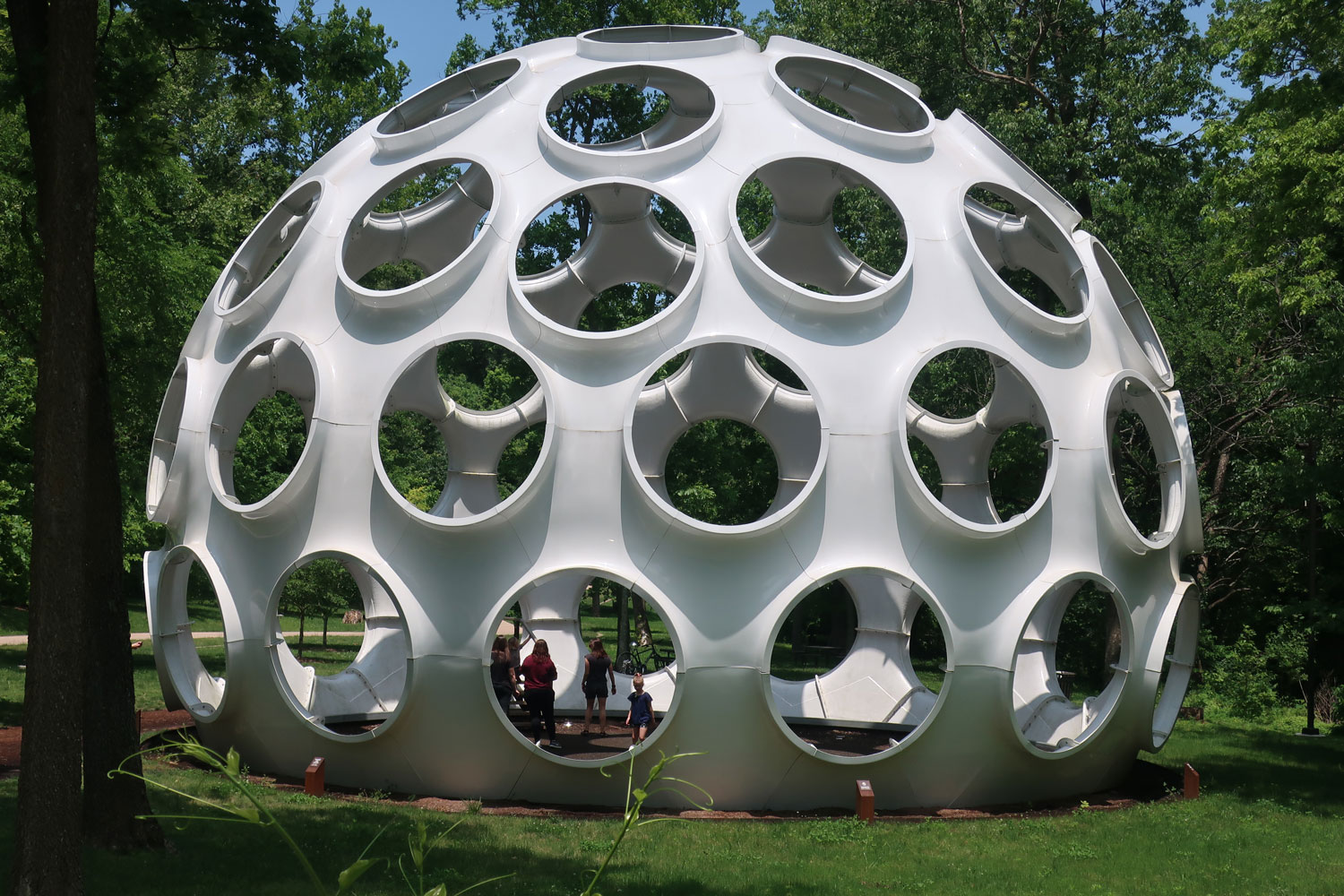
Year: 1965
Location: Miami, United States
The Fly’s Eye Dome was the final prototype designed by R. Buckminster Fuller for economical and portable future housing focused on minimizing the structural weight of the dwelling in 1965. The design was influenced by the structure of a fly’s eye. Fuller envisioned this dome as an affordable and portable dwelling for the future.
The design incorporated windows and openings within the dome to accommodate solar panels and water collection systems, enabling the dome to achieve self-sufficiency. With offering flexibility and incorporation of different systems, Fly’s Eye Dome represents Fuller’s continued ambition for an “autonomous dwelling machine”. Until his death in 1983, he hand-built three prototypes of Fly’s Eye Dome, which are currently owned by Norman Foster, Craig Robins, and Robert Rubin.
Buckminster Fuller stands as a visionary thinker whose innovative contributions spanned the realms of architecture, design, and sustainability. His pioneering work on geodesic domes and the Dymaxion car, among other concepts, showcased his commitment to pushing the boundaries of conventional wisdom. Fuller’s philosophy of “doing more with less” remains a guiding principle in discussions about sustainable design and ecological consciousness.
His tireless pursuit of solutions to global challenges, as seen in the World Game concept and environmental endeavors, reflects a holistic approach to addressing complex issues. Buckminster Fuller’s legacy endures not only in physical structures but also in the enduring influence of his ideas on future generations of architects, designers, and forward-thinking individuals.
Learn with PAACADEMY: Check out the workshops at PAACADEMY to learn from the industry’s best experts how to use advanced parametric design tools, AI in design workflows, and computational design in architecture!


















Leave a comment